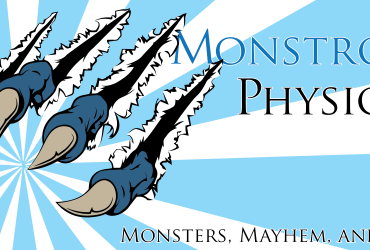Hey everyone! Sorry if this article today sounds rushed, I had intended to release the article I wrote on Thursday today, and this article had to happen fast as a result. Such is life! (Thanks for forgetting to tell us Anthony was going to be in Madrid last week, Jerry!)
Anyway, I wanted to do an envoy character for my next build, so I put it together for you all to enjoy. I’ve seen a lot of people criminally undervalue the envoy as a party member, so I figured I would set the record straight on Starfleet Design today. So buckle up and get ready to experience the wonderful world of being Captain John Picard.
Build Concept

This caption is dedicated to Stephen Radney-MacFarland. You know what you did.
Any information important to understanding the build or its roots goes here.
- Classes: envoy 12
- Feats: Toughness (1st), Weapon Specialization (3rd; Bonus) Coordinated Shot (3rd), Bodyguard (5th), Unfriendly Fire (7th), Mobility (9th), Shot on the Run (11th)
- Class Features: expertise (1d6+2), weapon specialization
- Improvisations: hurry (1st), dispiriting taunt (2nd), get’em (4th), don’t quit (6th), improved hurry (8th), clever improvisations, (10th), improved get’em (12th)
- Expertise Talents: menacing gaze (3rd), well-informed (7th), student of technology (11th)
- Skill Expertise: Intimidate (1st), Diplomacy (5th), Computers (9th)
Play Summary
I really like this build, and the envoy as a result. There are two rules to remember when you’re building an envoy: First, you need to make sure that you pick envoy improvisations that eventually improve to the point where you can fill both of your actions for the round (move / standard) with cool envoy tricks. Second, you need to make sure that you are picking expertise skills that sync up with your envoy improvisations. Because when you get right down to it, the envoy’s job isn’t to shoot people in the face. Their job is to use their special abilities to make it easier for other people to shoot your foes in the face.
So, how does this apply to this build? Well, we begin with what is easily one of the most powerful abilities in the envoy’s arsenal, hurry. Granted, hurry’s power is completely dependent on your party composition and how valuable those move actions are, but generally speaking just giving an action to a party member when they need it is really, really good. You can let your solarian move up to the battlefield so he can full attack next round, or you can help your soldier reload her heavy gatling gun faster. Giving others your actions effectively optimizes the action economy and is really useful. It gets even better at 8th level, when you can give move actions as a move action, or spend 1 Resolve to give a standard action as a move action.
So, what’s the other half of this puzzle? Dispirited taunt. Basically, this ability lets you use Intimidate to knock a foe off-target, but you can’t actually fail the check. If your check is successful, your target is shakened until the end of your next turn. If your check fails, they’re off-target, which is a lesser penalty (–2 to attack rolls, but not saves or skill checks). Basically, it doesn’t matter what you roll, you auto-penalize one target with a –2 to hit, provided it can be affected by fear effects. You will also pick the ability to use this improvisation as a move action, meaning by 8th level you can give a move action (or a standard action) as a move action, then auto-penalize an opponent’s attack rolls.
But hey, don’t want to wait until 8th level? Well, picking up get’em lets you pick a target and automatically grant your friends a +1 bonus to hit your target as a move action. So you can maneuver a soldier into opportune positioning, then use get’em to give them a bonus on attack rolls. When you get improved get’em, your bonus goes from +1 to +2, and you get the ability to attack as part of the ability using a standard action. (Meaning you can give a friend a move action as a move action, then give you and your allies a +2 bonus to hit a target while also attacking them yourself.)
I feel like it’s criminal for me to move past don’t quit, but I need to wrap this up soon so I’ll just say this—if you can’t see the value in turning off a condition for a pivotal party member, I don’t know what to tell you. Using don’t quit you could stop a friend from being paralyzed, then move them adjacent to an enemy so they can attack for you. It’s so cool I don’t have words for it, so I’m going to talk about feats instead.
Feats! This build capitalizes on spending its actions by taking the Bodyguard feat. Very cool, very useful. Between Bodyguard and dispirited taunt, you can make an enemy’s attacks swing 4 lower in your ally’s favor, and with how AC scales in SF that is a REALLY good defense. “But you have to be adjacent to someone being hit!” you cry. Well, try Coordinated. That way when you’re in melee with someone, your allies with the big guns get bonuses to attack the person you’re threatening as long as you’re not in the way. (And with hurry, you can move your allies into the perfect position without ever needing to move yourself; are you getting why this improvisation is amazingly good yet?) Grab Toughness for Survivability and Unfriendly Fire because it’s hilarious. (Penalize a ranged foe with your cool envoy abilities, and when they miss you use your Bluff skill to redirect the miss onto another enemy; so good!)
The envoy is definitely in a solid place in Starfinder—this is by no means the only workable build. For example, you could try clever feint as a means to swing an enemy’s AC lower (this build is way more defensive, as you could probably tell). Part of the trick to working with the envoy is to see their actions not as ways to do damage, but as ways to improve and optimize the party’s action economy. They make the attacks hit more and protect action investment by buffing AC. If you’re all about the buff game, grab an envoy and give it a try; you won’t be disappointed!
PS. I’m still working on getting a header image for Starfleet Design together, so I figured I’d ask the audience. What do you want to see for the header image? I use a modified vitruvian man for Iconic Design; what would YOU want to see? If I like your suggestion, I just might use it!
Alexander “Alex” Augunas has been playing roleplaying games since 2007, which isn’t nearly as long as 90% of his colleagues. Alexander is an active freelancer for the Pathfinder Roleplaying Game and is best known as the author of the Pact Magic Unbound series by Radiance House. Alex is the owner of Everyman Gaming, LLC and is often stylized as the Everyman Gamer in honor of Guidance’s original home. Alex also cohosts the Private Sanctuary Podcast, along with fellow blogger Anthony Li, and you can follow their exploits on Facebook in the 3.5 Private Sanctuary Group, or on Alex’s Twitter, @AlJAug.






Looks like fun, but you can’t take that Student Of Technology talent. You’d need Expertise in Engineering rather than Computers to do so. I’m about to start a game as a Lashunta Envoy. She’s taking the Icon route, a former movie star who’s now adventuring. Big on Bluff, Diplomacy and Intimidate for messing with people’s heads. Looking forward to seeing how it plays out. As of creation she’s utterly useless at combat.
Isn’t Hurry a 4th Level Improvisation? I don’t think you can take this straight away unless you’re starting at a higher lever, or house-ruling something.